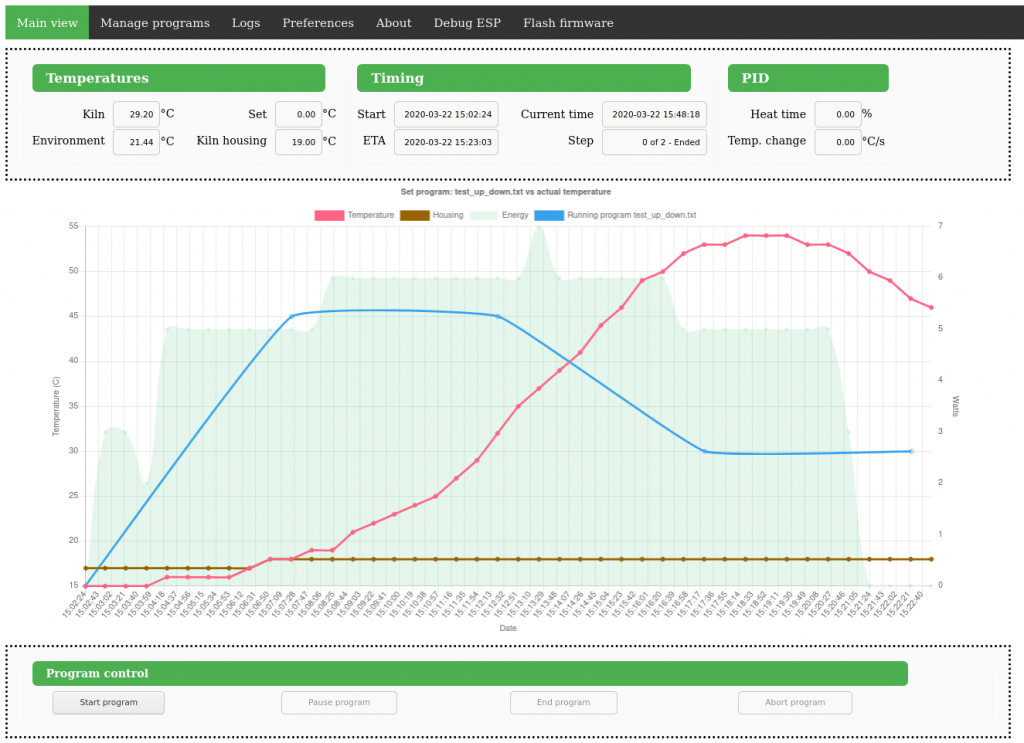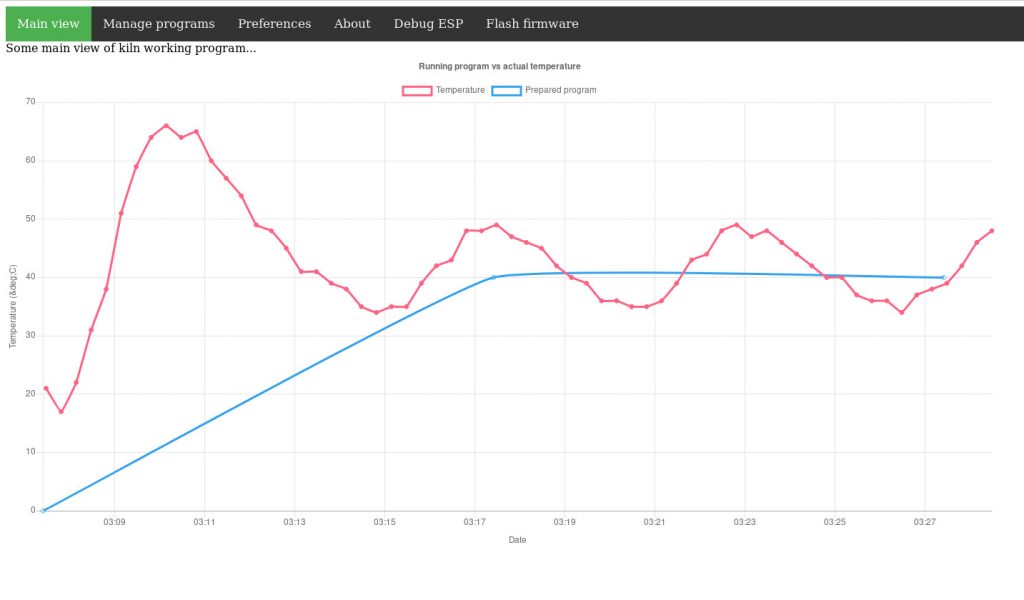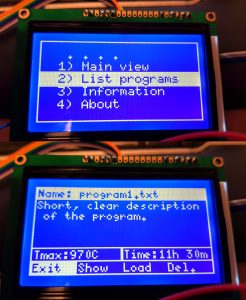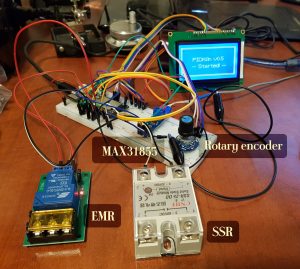PIDKiln v1.2 update
I’ve just created v1.1 release of PIDKiln, and bumped development version to v1.2.
Most significant change in release 1.1 are:
- replaced MAX31855 library with another one – it’s much cleaner and easier to modify
- much better MAX31855 error handling, both with thermocouple and MAX31855 itself
- introduced network logging with syslog protocol – so you can watch all debug information on remote host
- all logging settings are now in Preferences
- compressed local JS, and created separate Preference setting to allow remote downloading of JS scripts (Internet connection required – recommended to use)
And I have also (after some 1.2 changes) first, real Kiln test run.

With two termocouples and power meters.
Source like always on GitHub.







Recent comments